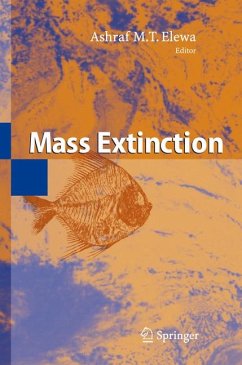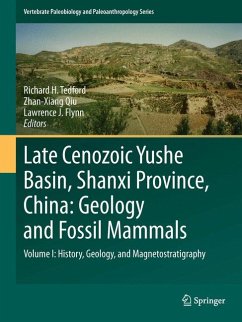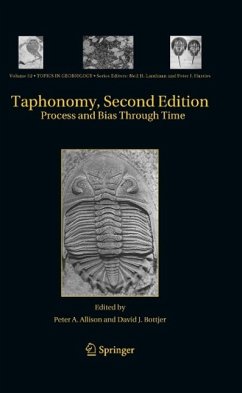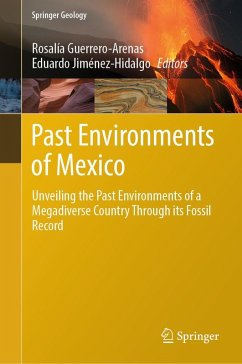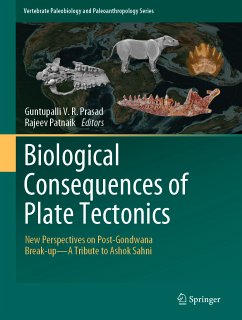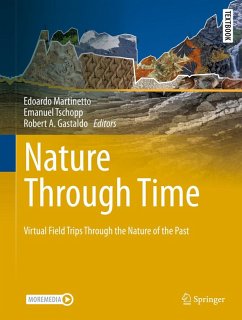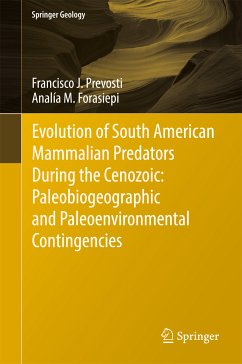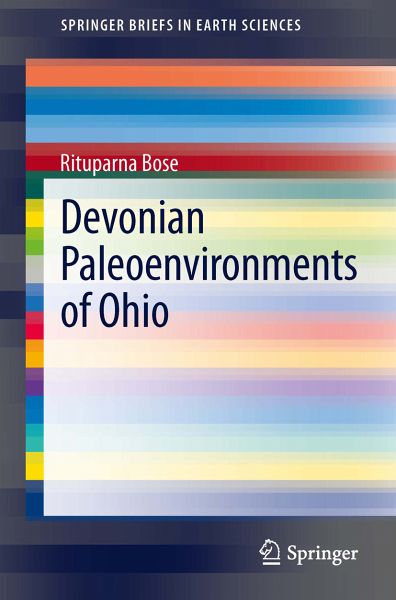
Devonian Paleoenvironments of Ohio (eBook, PDF)
Versandkostenfrei!
Sofort per Download lieferbar
40,95 €
inkl. MwSt.
Weitere Ausgaben:

PAYBACK Punkte
20 °P sammeln!
Carbonate depositional systems in the Paleozoic geologic time represent fewer studies in paleoecological interactions than the siliciclastic systems. To evaluate this difference, the paleontology of the Middle Devonian Dundee Formation in Ohio has been explored. This geologic formation represents an important environment in the Michigan Basin of North America. Understanding biotic relationships such as mutualism, commensalism, parasitism and predation in an ecological community is important in unraveling the mystery of the fossil record. This research has contributed a large field collection w...
Carbonate depositional systems in the Paleozoic geologic time represent fewer studies in paleoecological interactions than the siliciclastic systems. To evaluate this difference, the paleontology of the Middle Devonian Dundee Formation in Ohio has been explored. This geologic formation represents an important environment in the Michigan Basin of North America. Understanding biotic relationships such as mutualism, commensalism, parasitism and predation in an ecological community is important in unraveling the mystery of the fossil record. This research has contributed a large field collection which will be useful in documenting the fossil content of this unit for future workers. Rituparna Bose used new microscopic and imaging techniques in qualitatively analyzing the biotic interactions in small invertebrate shells. More importantly, she solved complex hypotheses in newly emerging problems in the field of geology and paleontology, such as the biodiversity crisis. Her study involved exploring the Devonian geology and paleontology of a geologic formation of a new unexplored quarry in Ohio, namely the Whitehouse Quarry in Lucas County, Ohio. She identified Devonian brachiopods to the genus level based on their morphology, and diagnosed paleoecological entities on host brachiopods and further measured episkeletobiont traces on hosts to understand the effects of environment and evolution on extinct species. Such studies have implications in predicting future biodiversity, ecosystem conservation and climate change. This research will also assist future workers to compare the ecology of brachiopod hosts of the Dundee Limestone with that of other Devonian brachiopods, from both carbonate and siliciclastic settings.
Dieser Download kann aus rechtlichen Gründen nur mit Rechnungsadresse in A, B, BG, CY, CZ, D, DK, EW, E, FIN, F, GR, HR, H, IRL, I, LT, L, LR, M, NL, PL, P, R, S, SLO, SK ausgeliefert werden.



